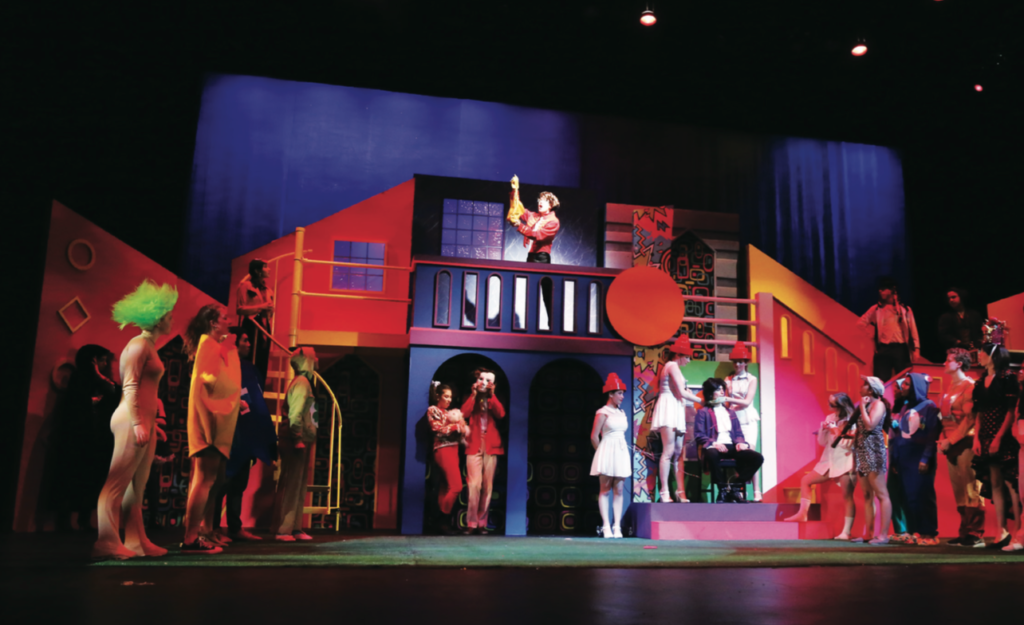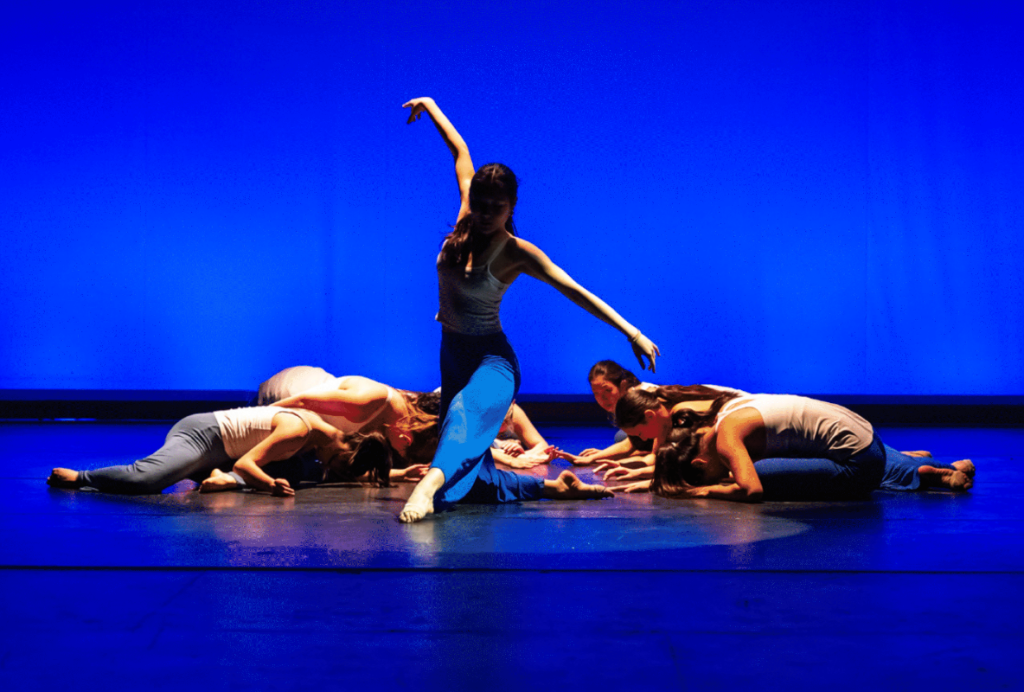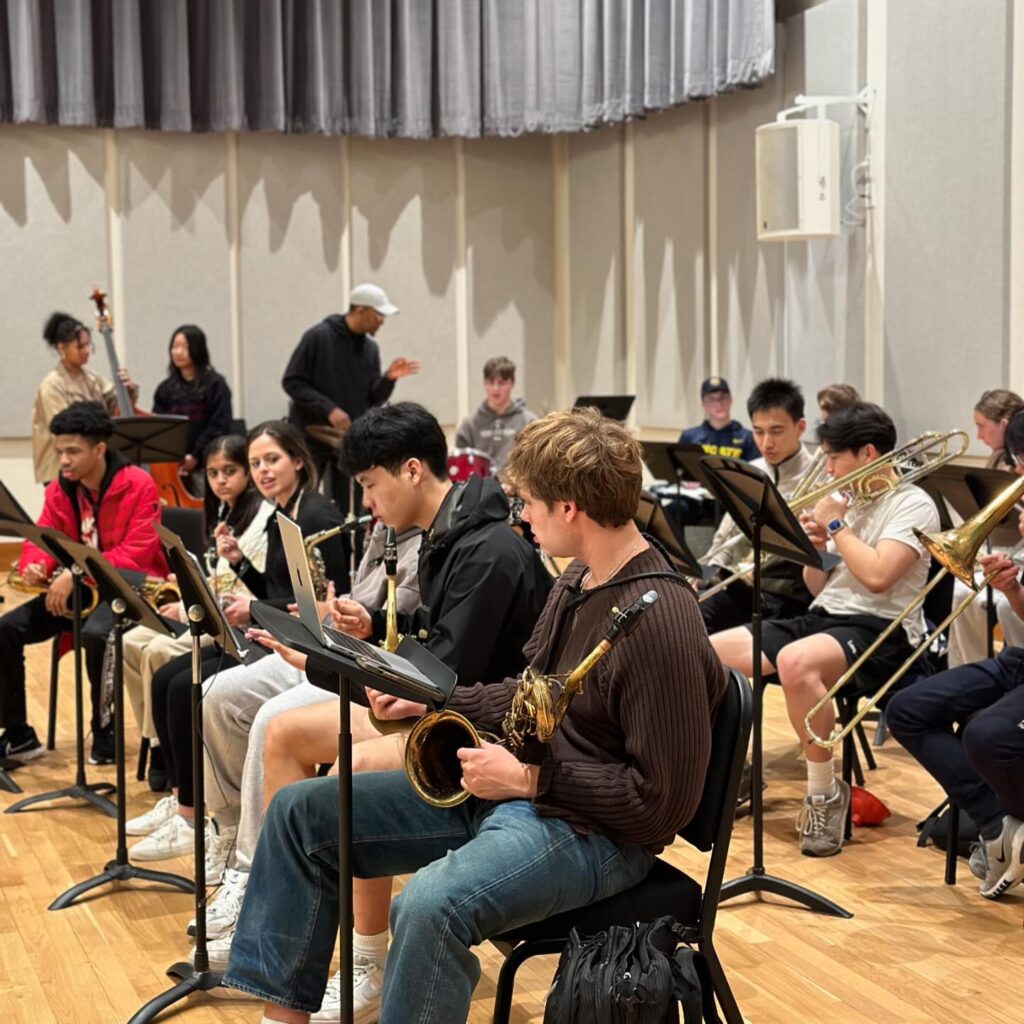
The cast of The Love of Three Oranges comes together to amuse the sick Prince Tartaglia in a kingdom-wide festivity.
Choate Rosemary Hall has long favored boldness in all aspects, particularly within the arts. This winter, Choate put on two connecting plays: The Love of Three Oranges and The Green Bird. These plays not only wrestle with what it means to live and to love but also the isolation of spectatorship and, most startlingly, the horrors of incest.
The shows received smashing reviews in the Choate community. Anabel DeMontebello ’18 said, “These plays were by far the best non-musical production I’ve seen at Choate so far. They really kept the audience engaged, and the references to the modern day were hilarious.”
The first play, The Love of Three Oranges, tells the a story that seems to be from days of yore, but has distinct 80’s influences in dialogue, music, choreography, costuming, and makeup. The play centers on Tartaglia, the son of the King of Hearts, played by Christopher Overmeer ’17, who is melancholy (due to a long standing illness), bedridden, and predicted to die soon. His father, Silvio, played by William Robertson ’20, is desperate to make his son laugh to help him survive. Meanwhile, the conniving Clarice and Brighella, played by Caleb Hastings ’18 and Mia Rubenstein ’18, are attempting to quicken the death of the young prince in order to harness the power of the crown. Truffaldino, played by Eamonn Welliver ’18, tries to make the young prince laugh, but has little success. Then, when good and evil witches are ushered to direct the outcome of the prince’s life, Fata Morgana is caught in her underwear in front of the prince, and curses him to pine for three oranges. The second half of the play consists of Tartaglia and Truffaldino’s journey to find the oranges. Although a few extraneous plot holes lie about (such as how the princesses got into the oranges in the first place), the story is entertaining and relatively easy to follow.
The second play, The Green Bird, is an example of a tale of magic without realism. Similarly, in the Commedia dell’Arte tradition, the sequel to The Love of Three Oranges displays (seemingly) improvised dialogue and stock characters. Barbarina and Renzo, who are Tartalgia’s twin children, find their way back into the royal kingdom. Their real mother, Ninetta, escapes from the palace drain to regain her place in the palace and reunite with her family. Narrated by Calmon, an accent-changing statue, the story unfolds into an intricate spectacle that challenges reality at each turn. A fairy tale on drugs, The Green Bird demands the attention of the audience in a different format than The Love of Three Oranges. By combining a traditional fairy tale with the scandalous, the plays infiltrates the mind of the audience to make them think more deeply about the intricacies of human interaction.
Both plays center heavily on interacting with the audience. Elyse Cornwall ’18 commented “The addition of the narrator in each play really made the shows more relatable and added a different dimension of humor. I liked how engaged the audience was the entire time. It was funny to interact with our peers in that uncommon setting.”
Nicole Sellew ’17 agreed, saying “The narration was definitely my favorite part of the play. Graysen and Eamonn both did an excellent job of keeping the audience attentive and extrapolating the story. The play was confusing at times due to the heavy details and overall fast-paced dynamic of the show.”
By putting the interests of the audience first, the tragedy, romance comedy, and drama that these two, culminating plays encapsulate gently force the audience to reflect on various aspects of society brought up. Thus, the two plays doubtless had a comedic impact on the Choate community.



